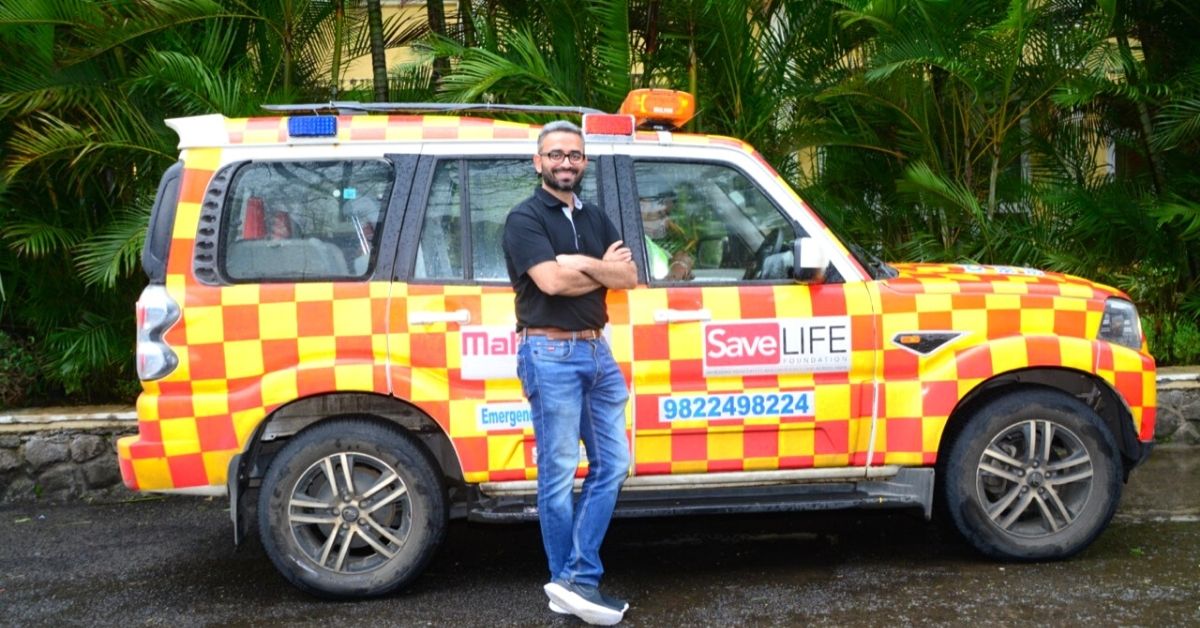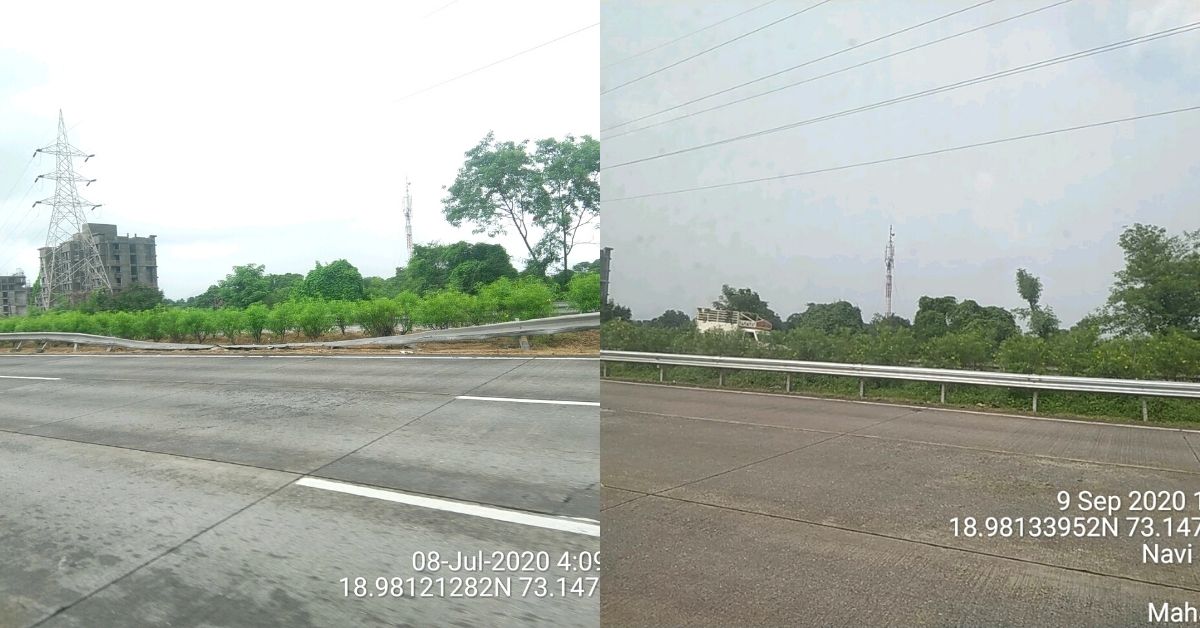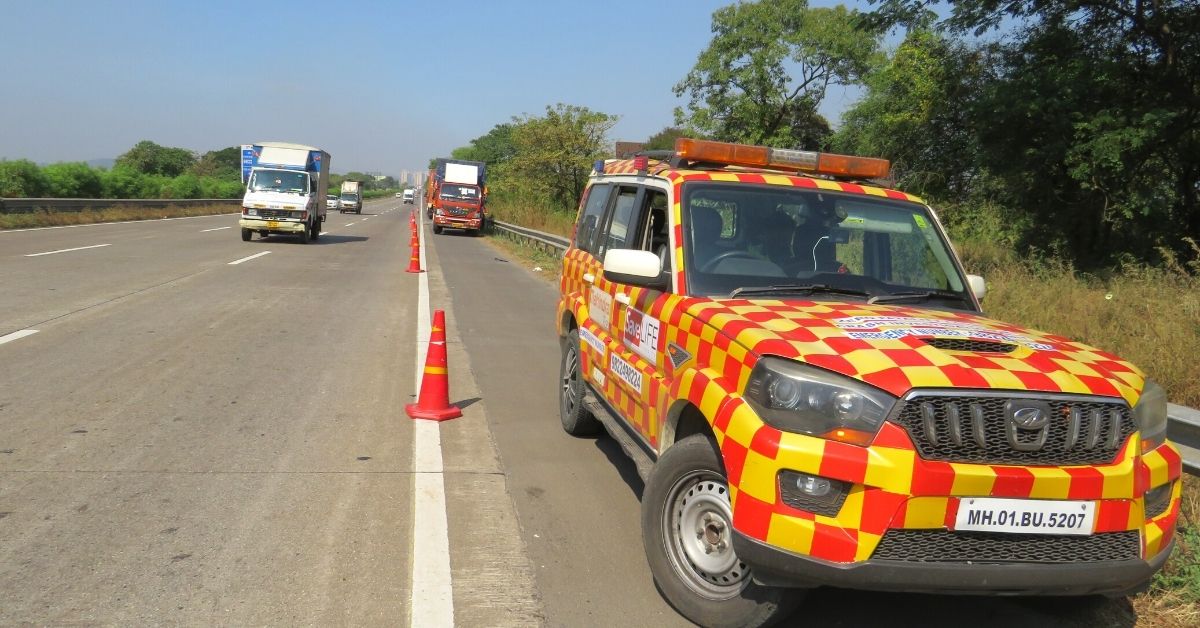Unsung Hero Helps Reduce Deaths On Mumbai-Pune Expressway By 43% in 4 Years
Through his NGO Save Life Foundation, Piyush Tewari introduced multiple interventions on the Mumbai-Pune Expressway to prevent 7,000 crashes alone in 2019

Two ‘secretly captured’ images of vehicles driving on Mumbai-Pune Expressway recently revealed drivers using mobile phones without their hands on the steering wheel.
Of both the vehicles driving on Mumbai-Pune corridor, shockingly one of them involved a VIP vehicle driving at the speed of 91 km/hr. The second vehicle was found overspeeding at 110 km/hr.
The foolproof evidence was made possible only because of the technological intervention made by the Save Life Foundation. The not-for-profit foundation was started by finance professional Piyush Tewari to improve road safety in 2008 after he lost his cousin in a road accident.
‘Zero fatality corridor’
Since 2016, the Save Life Foundation (SLF) has been working with the state highway police, state highway authorities and Mahindra & Mahindra intending to make the expressway a ‘Zero fatality corridor’.
“The Vehicle Activated Speed-sign System (VASS), is a new Artificial Intelligence (AI) technology that is recently introduced to the expressway to correct the driving of the vehicles,” says Piyush.
The smart technology imported from Australia helps to identify such distracted drivers and allow enforcement agencies to act on them.
Thousands of engineering issues addressed

Save Life Foundation claims that multiple initiatives like this, taken over the last four years, have helped reduce the fatality on the expressway by 43%. Even the crash severity has declined by 29%.
“The number of fatal accidents reported in the year 2016 was 151 which has declined to 86 in 2019,” says Piyush, adding that 25% of the crashes happen because the distracted drivers are on a mobile phone.
The experts at the foundation say they analyse and investigate about 350 crashes every year reported on the expressway. The investigations help to understand the cause of accidents, and interventions are recommended accordingly.
“Analysing some accidents revealed that the drivers did not brake on time. This scenario happens if the brakes fail or the driver sleeps off. However, in some crashes, there were short tyre marks on braking the vehicle. Such marks only occur if the braking occurs suddenly or if it was too late before the driver tried to stop the vehicle from crashing,” Piyush says.
The increasing need for evidence and deterring the irresponsible drivers was the reason to bring about this technology.
The foundation says 2,500 engineering issues were noted in the year 2016 on the expressway. Since 2016, about 2,000 have been addressed in the past four years, making travel on this road safer.
The interventions often involve simple solutions to prune the plantation along the highway to increase visibility on the curves, to closing the median gaps or sometimes having enough warning signs to keep the driver alert.
Apart from that, engineering and technological solutions are put in place.
Quick ambulance response time

“Apart from getting the first smart cameras, the Mumbai-Pune Expressway is also the first in the country to get a tactile edge to wake up the sleepy drivers. These rumblers, which are tiny speed bumps on the road, create small vibrations or jerks in the vehicles to alert the drowsy drivers,” the founder says.
Piyush adds that apart from the crucial interventions, unguarded trucks parked along the highway resulting in rear collisions are another big concern.
“Strategic intervention vehicles are deployed along the expressway who patrol and get vehicles that breakdown or park illegally off the expressway. About 40% of the deaths are because of the rear collisions, and we have been able to prevent 7,000 rear collisions in 2019,” Piyush tells The Better India.
The expert says that warning signs are also drawn about 100 meters from the vehicle allowing drivers to avoid the collision.
Besides technology and engineering solutions, the SLF has been able to optimise the role of enforcement agencies along the expressway.
“The actions of drivers violating the norms on the expressway are usually captured near the toll plaza or selected junction, which does not help the police machinery to act effectively. Through data and data science, we now know precisely where the police need to position themselves to intercept violators along the entire stretch,” Piyush adds.
Moreover, the data gathered also ensured to determine where the ambulances should station in case of a crash. “The response time of ambulances is halved to seven minutes now. The access to medical treatment in emergencies helps save lives,” Piyush says.
Vijay Patil who worked as a superintendent of police, highway safety, for the past three years says, “There have been many interventions on the Mumbai-Pune expressway through engineering and enforcement over the past few years.”
He adds that about 20 engineering errors are corrected repeatedly in over 1,000 locations along the Mumbai-Pune expressway.
Drones to reduce accidents

With multiple interventions in place, Piyush says there is still a lot to be done.
“The big challenge remains to keep illegally parked vehicles or the ones broken down off the expressway. There are high chances that by the time the patrol team reaches after learning about it, a vehicle crashes into it,” Piyush says.
To support the patrolling vehicles drones are waiting to fly over the expressway in the coming months. “The drones should help to identify such vehicles quicker and help avoid accidents. If the rear collision issue is solved, it will help reduce fatalities by 75-80%,” Piyush adds.
This way almost every crash that is caused by human error could potentially be prevented, ruling out freak accidents and others that occur due to technical reasons which need further studies.
If the move is successful, the expressway will become the safe expressway in the country, opening the possibility for the SLF model to be replicated across other projects in India.
This story made me
- 97
- 121
- 89
- 167
Tell Us More
We bring stories straight from the heart of India, to inspire millions and create a wave of impact. Our positive movement is growing bigger everyday, and we would love for you to join it.
Please contribute whatever you can, every little penny helps our team in bringing you more stories that support dreams and spread hope.



















